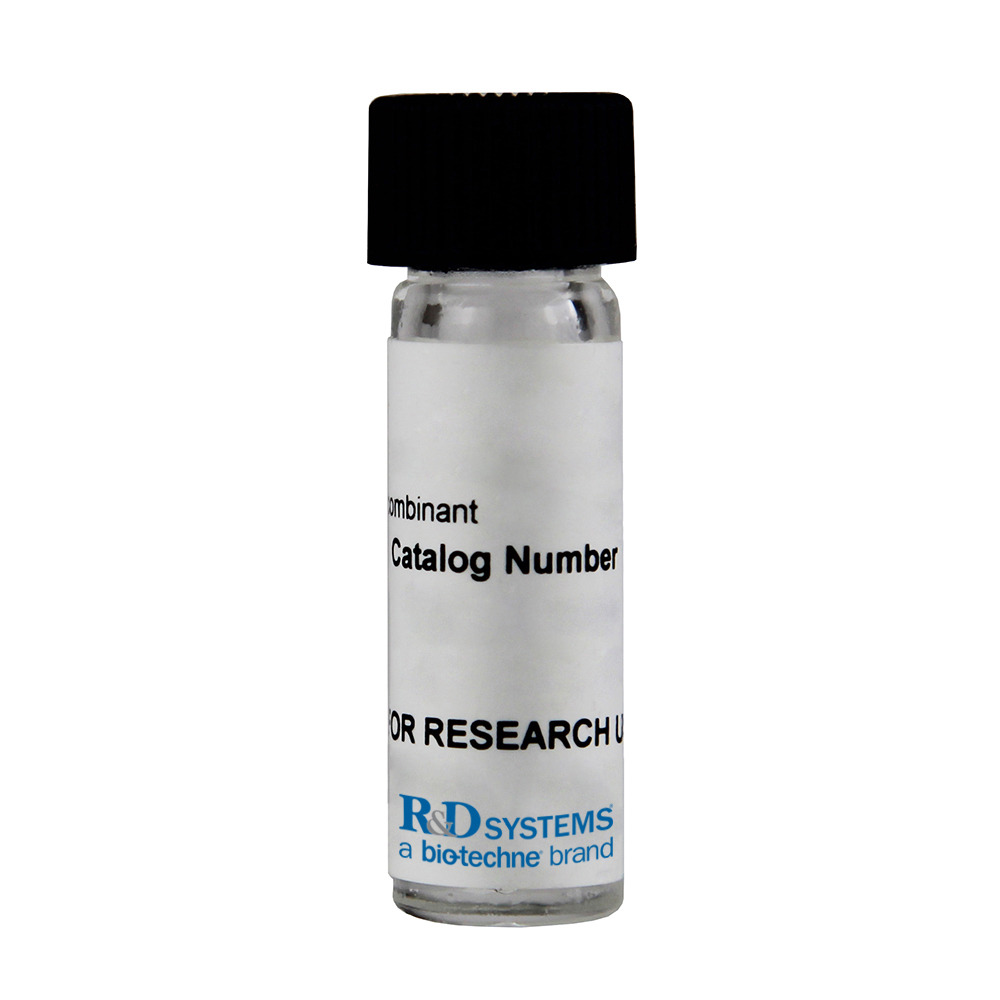

 下载产品说明书
下载产品说明书 下载SDS
下载SDS 用小程序,查商品更便捷
用小程序,查商品更便捷



 收藏
收藏
 对比
对比 咨询
咨询Carrier Free
CF stands for Carrier Free (CF). We typically add Bovine Serum Albumin (BSA) as a carrier protein to our recombinant proteins. Adding a carrier protein enhances protein stability, increases shelf-life, and allows the recombinant protein to be stored at a more dilute concentration. The carrier free version does not contain BSA.
In general, we advise purchasing the recombinant protein with BSA for use in cell or tissue culture, or as an ELISA standard. In contrast, the carrier free protein is recommended for applications, in which the presence of BSA could interfere.
3495-LR
| Formulation | Lyophilized from a 0.2 μm filtered solution in PBS. |
| Reconstitution | Reconstitute at 250 μg/mL in sterile PBS. |
| Shipping | The product is shipped with polar packs. Upon receipt, store it immediately at the temperature recommended below. |
| Stability & Storage: | Use a manual defrost freezer and avoid repeated freeze-thaw cycles.
|
Recombinant Human LRIG3 Protein, CF Summary
Product Specifications
Asp28-Thr807, with a C-terminal 6-His tag
Analysis

Background: LRIG3
LRIG3 (leucine-rich repeats and Ig-like domains-3) is a 140 kDa type I transmembrane glycoprotein member of the mammalian LRIG glycoprotein family. This family contains three members who share 45 - 50% amino acid (aa) identity (1). All members contain at least fifteen LRRs, accompanied by two flanking cysteine-rich regions, and three C2-type Ig-like domains in their extracellular domains (ECD) (1). LRIG3 mRNA is widely expressed, with highest levels in stomach, skin, thyroid and small intestine (1). Human LRIG3 is synthesized as a 1120 amino acid (aa) precursor. It contains a 24 aa signal sequence, a 786 aa ECD, a 21 aa transmembrane sequence, and a 289 aa intracellular region. One splice variant exists that has a 19 aa substitution for the first 79 aa of the standard (or long) form. This substitution appears to encode an alternate signal sequence, resulting in a mature protein that lacks the first and part of the second LRR. LRIG1, a related family member, is known to bind the EGF family receptors ErbB1-4, via either its LRR or Ig-like domains. It also binds the ubiquitin ligase, c-Cbl, and promotes ubiquitination, internalization and destruction of these receptors (2, 3). It is not known whether LRIG3 performs similar functions. Within the cell, LRIG3 is expressed in the perinuclear region as well as on the cell surface. Perinuclear location of LRIG3 in grade III and IV astrocytic tumors has been associated with better patient survival (4). Human LRIG3 ECD shows 91%, 92%, 95% and 98% aa identity with mouse, rat, bovine and canine LRIG3 ECD, respectively.
- Guo, D. et al. (2004) Genomics 84:157.
- Gur, G. et al. (2004) EMBO J. 23:3270.
- Laederich, M.B. (2004) J. Biol. Chem. 279:47050.
- Guo, D. et al. (2006) Acta Neuropathol. (Berl.) 111:238.









 危险品化学品经营许可证(不带存储) 许可证编号:沪(杨)应急管危经许[2022]202944(QY)
危险品化学品经营许可证(不带存储) 许可证编号:沪(杨)应急管危经许[2022]202944(QY)  营业执照(三证合一)
营业执照(三证合一)